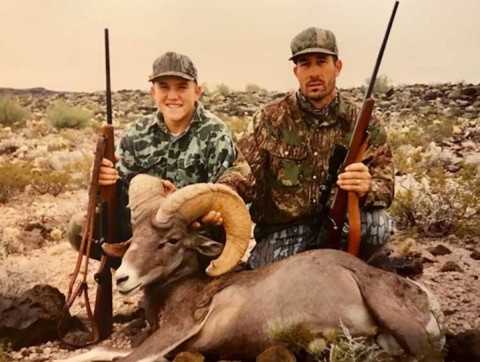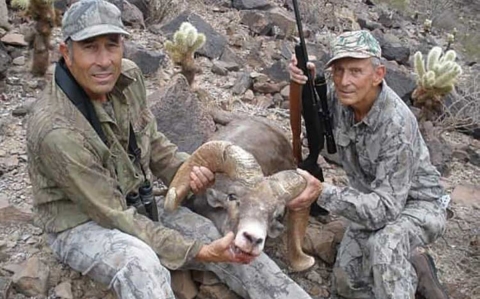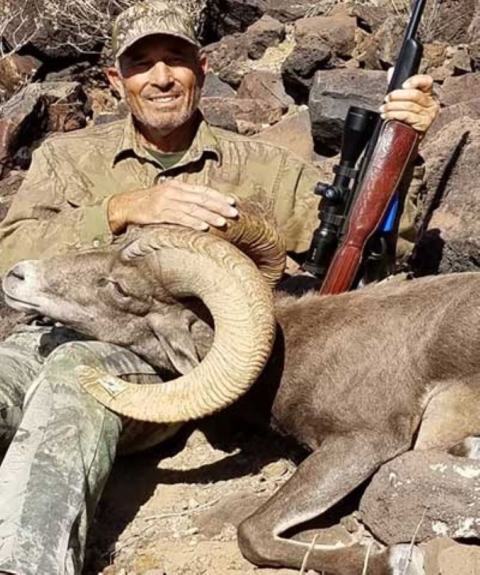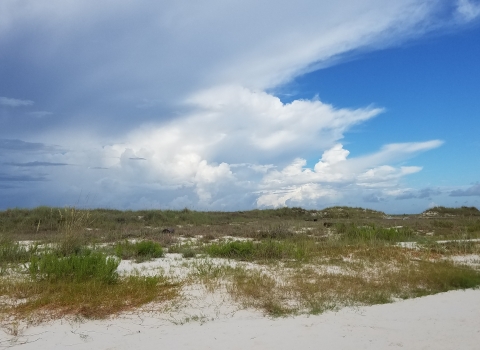Autumn is for remembering. The last light of summer yields to the first beautiful days of fall. This time of year is a communion between what was and what might be. Fall brings with it hunting seasons—and naturally, memories of seasons past.
“Some hunters wait a lifetime to draw a bighorn tag in Arizona, and some never do,” said Anderson. “For three of us to draw tags over the years and take sheep off the refuge has got to be extraordinarily rare.” Len Anderson of Tucson, Arizona, a retired high school chemistry and biology teacher and baseball coach, remembers desert bighorn sheep hunts. For with him, it’s a family matter. Three generations of Andersons have a particular attachment to the U.S. Fish and Wildlife Service’s Cabeza Prieta National Wildlife Refuge and hunting bighorns on craggy mountainsides under the desert sun. Len and his father and his son—all three have harvested desert bighorns on the refuge.
The Arizona Game and Fish Department issues desert bighorn sheep tags by lottery. The numbers of licenses available are few while applicants are many. Competition for sheep tags is stiff and only a select number of hunters get on the refuge each year. That number varies from 6 to 12 each autumn, and depends on the sheep population size.
Len’s son Dennis was the first Anderson to harvest a sheep on the refuge, in 1994. He was only 16 years old at the time, but by no means was it his first hunt.
“Dennis had already taken a mule deer and a Boone and Crockett pronghorn. I introduced him to hunting when he was quite young, passing on to him what my dad passed onto to me,” said Anderson.
Dennis went on to a career in baseball, a switch-hitting catcher. He played for the University of Arizona Wildcats and then Minor League Baseball with the Marlins and Cubs franchises.
In 2008, Anderson’s father, Leonard, after 40 years, finally drew a sheep tag to hunt at the refuge.
“It was an odyssey,” said Anderson. “I am most proud of my dad—at 80 years old, we knew it would be a tough hunt in the wilderness. But he did it.”
The elder Anderson was no stranger to adversity. This son of a Finnish immigrant carpenter volunteered to join the U.S. Navy in World War Two—at 15 year old—promising his father he would complete high school if he came home. Leonard piloted Higgins boats in the Pacific theatre, laying brave Marines on the beaches at Iwo Jima and Okinawa, and pulling the dead and wounded back out to ships, all while under artillery and small arms fire. He didn’t earn his diploma, but did one better: a bachelor’s in Civil Engineering from the University of Arizona, followed by a license in structural engineering.
“Architects gave dad their drawings, and he’d make their buildings stand up,” said Anderson. “He had a fruitful career but it was a stressful job. He was a strong figure in the home and I saw a softer man when we hunted together. Dad introduced me to the solitude you find in the desert.”
There is much solitude to be found at Cabeza Prieta National Wildlife Refuge. It is arguably one of the most rugged places in the United States, comparable to just short of living on the lunar surface. The place names speak to exacting surroundings of the refuge: Growler Mountain, Camino del Diablo, Devil Hills, Sierra Arida. It is remote beyond words and harsh for humans. The heat is searing; commonly 115 degrees in summer. The refuge is expansive—1,344 square miles—and 93 percent of that is designated wilderness. If you want to see it, you use the quads in your thighs—that is, you go by foot. The wildlife refuge is larger than Rhode Island by 131 square miles, but absent a single permanent inhabitant.
Len Anderson would finally get his desert bighorn sheep in 2017. Though he had remarkably drawn a tag the same year as his boy Dennis, attentions during that hunt were devoted to his son. This time, however, at 68 years of age, Anderson was of the mind this might be his last sheep hunt. After several scouting trips and much preparation to get in what he calls “sheep shape,” he was the third Anderson to harvest a bighorn ram at Cabeza Prieta. But that’s not to say that the place is short on living creatures. To the contrary: saguaros stand steadfast on the desert floor. Sonoran pronghorn scurry over the sandy playas that are so common here. Six species of rattlesnakes make a living among the basaltic boulder-strewn soils. You can hear gilded flickers drum and flit about cholla and mesquite and ocotillo and other plants that have more thorns and spikes than leaves. And there is the desert bighorn sheep, an object of respect and affection among the Andersons.
Anderson remembers autumns recent and autumns past. “My 39-year-old son helped me pack out the ram just as I had helped him 23 years earlier,” said Anderson. “My dad, approaching his 90th birthday, could not participate in the hunt, but the first phone call I made was to him.”






